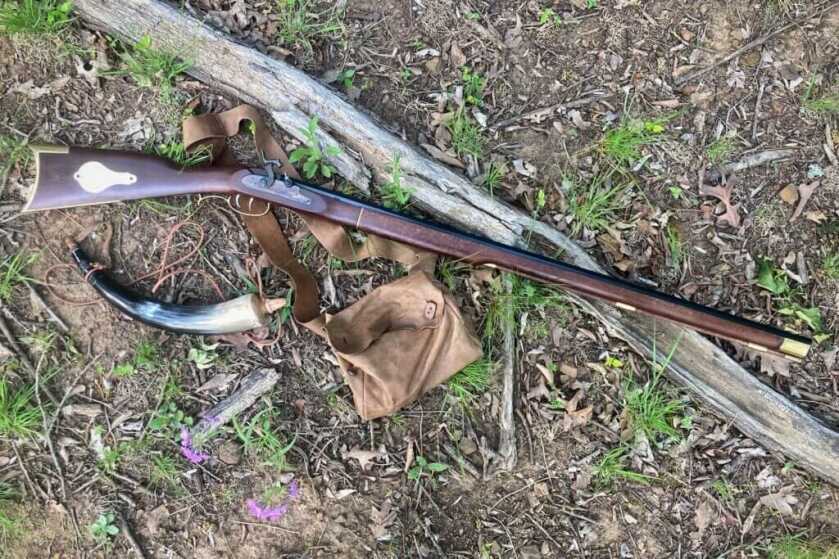
Estimated reading time: 9 minutes
This 50-caliber muzzleloader is often the first choice for those looking to get into traditional black powder. Let’s get back to the basics as I spend some time with the Traditions Kentucky Rifle.
Table of contents
Preface
If you ask my wife she will tell you that I am always on the move. Jumping from one project to the next. Keeping myself busy and making the most of my time. Overall I appreciate my productive proclivity but sometimes I have to make the continuous effort to slow down.
One of my slow-down hobbies is gardening. This is, in many ways, like shooting traditional black powder. Both demand more effort and patience than what is required today and also foster more appreciation for the end result. Just as my efforts enhance the enjoyment of every homegrown tomato so too with every hand-loaded shot from the Kentucky Rifle.
General Overview Of the Traditions Kentucky Rifle
If you are in the market for a traditional muzzleloader you have likely come across this gun. The Traditions Kentucky Rifle is one of the few mass-produced Kentucky-style muzzleloaders currently on the market. For this review, I tested the deluxe percussion cap model but Traditions has a flintlock version as well. Both models are also available as kits if you are interested in finishing the wood and assembling the rifle yourself.
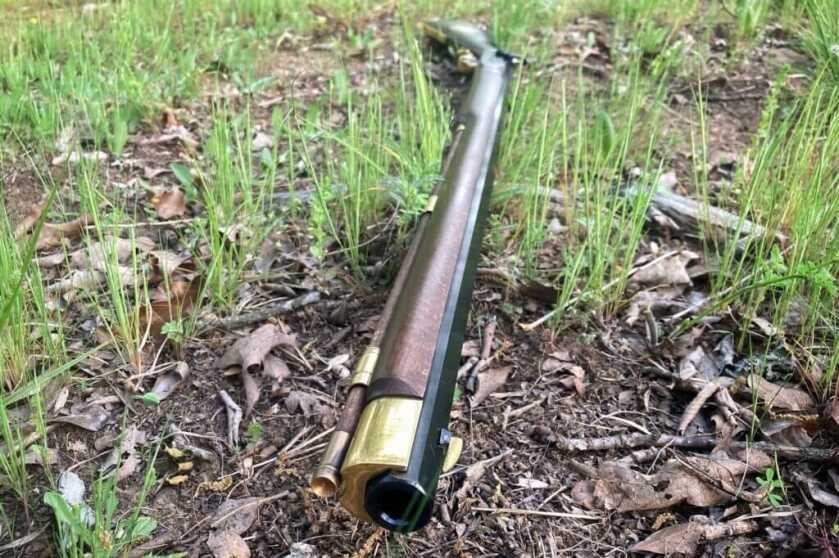
The thirty-three-inch hexagonal barrel has 1:66” rifling. Because of the slow twist rate, It is best to stick to the patch and ball for your projectiles. Sabbots will still fire from the rifle but without a higher twist rate to stabilize the nonuniform slug, you will likely get less than optimal performance.
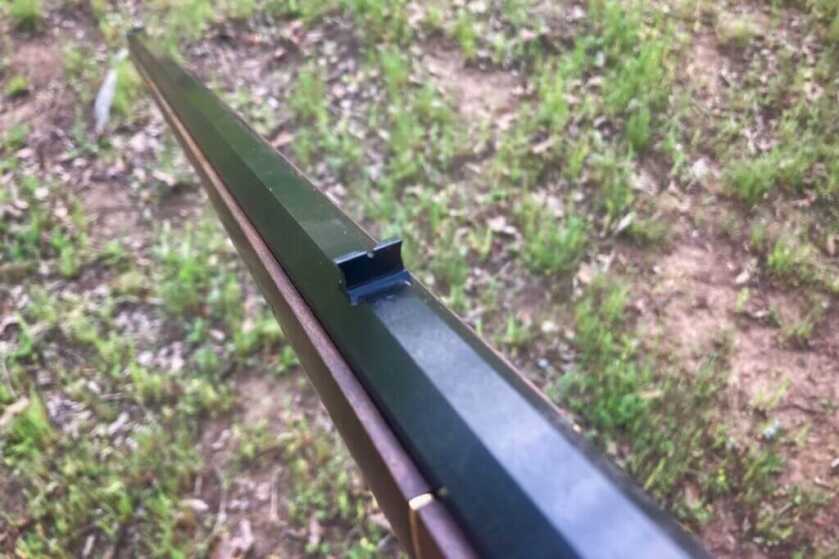
The sights for the Traditions Kentucky Rifle are simple but functional. The rear sight is a simple notch and the front sight is a brass blade. Both are attached to the rifle via dovetail so windage can be adjusted by tapping them to the left or right. Elevation is not adjustable. Although, I suppose you could file down the brass front sight if you’re hitting low.
The Hardwood Stock
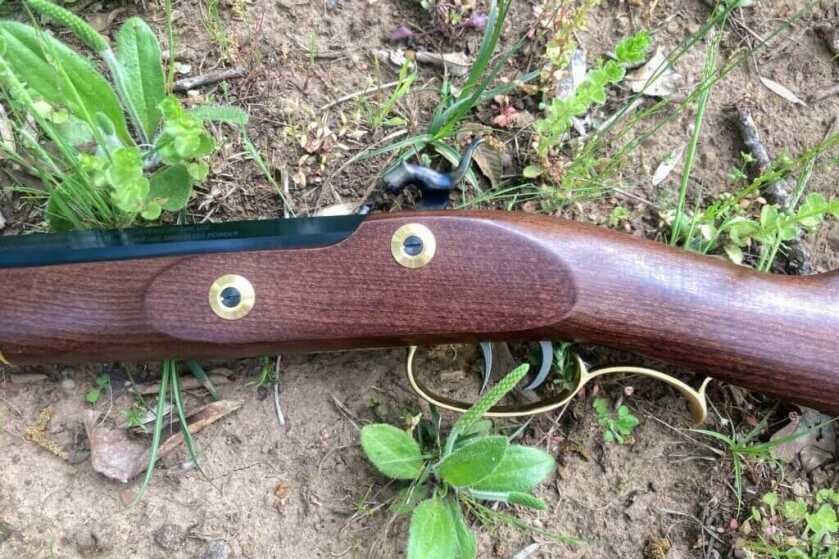
The full-length wood stock is one of my favorite parts of this rifle. It is reported as “walnut finished hardwood” so I am not sure of its composition but, looking at the unfinished area inside the patch box, I would guess that it is oak. No matter the wood, it is finished beautifully and the overall fit with the solid brass furniture is very nice.
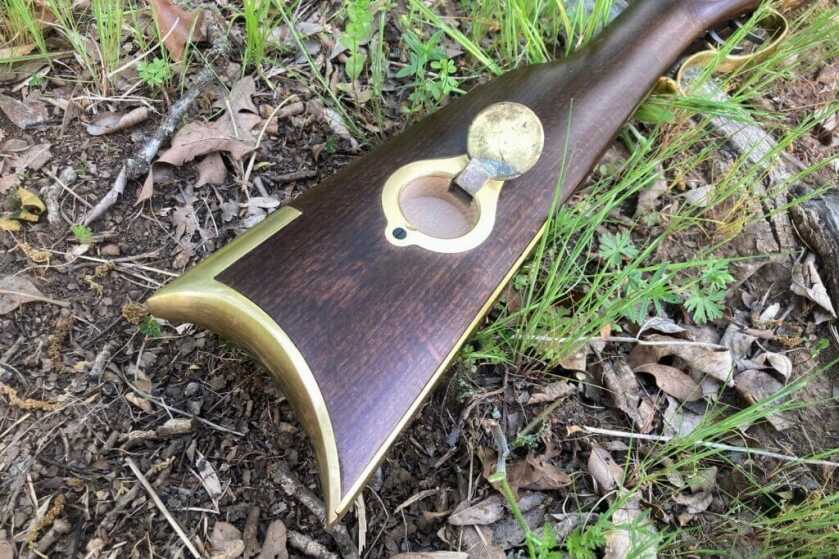
While the stock is my favorite in terms of appearance it is my least favorite in terms of function. The butt of the stock is particularly uncomfortable. The curve of the butt plate creates a point that jabs into your pectoral every time you shoot. The only solution I’ve found is to flare out my elbow and place the stock further toward my arm. This way the pointy part of the butt plate nestles harmlessly in my armpit.
Two Triggers for One Shot?
An interesting feature of this rifle is the double triggers. While double triggers may seem more at home on an over/under shotgun, let me tell you, this setup is phenomenal. The rear trigger is a set trigger that does not fire the gun but instead just preps the front trigger. Once it is set, the front trigger has zero take-up and breaks just under a pound.
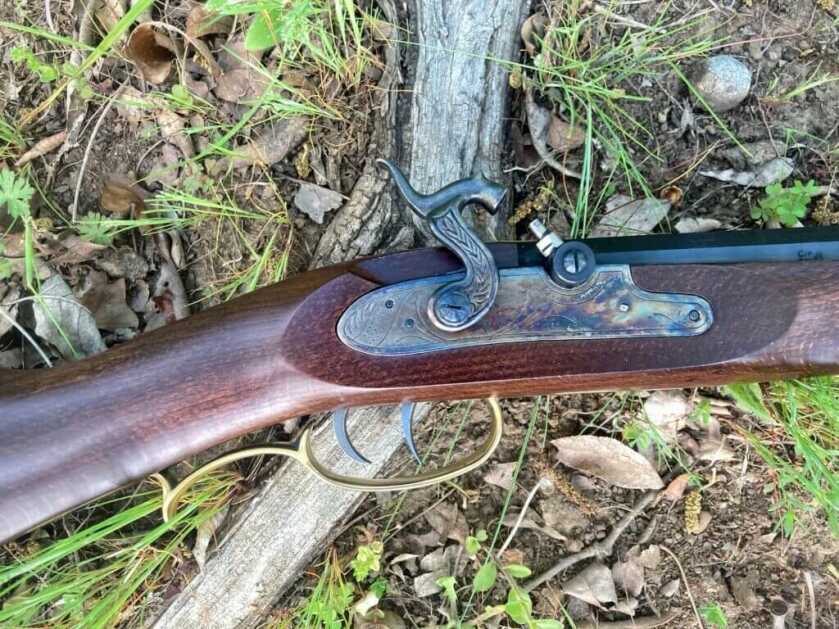
The light trigger and long sight radius make for an easy-shooting rifle. My accuracy test yielded a two-inch group at thirty yards. With most rifles, I wouldn’t be too happy with that result but considering I’m shooting round balls, using open sights and hand-measured powder it doesn’t sound so bad.
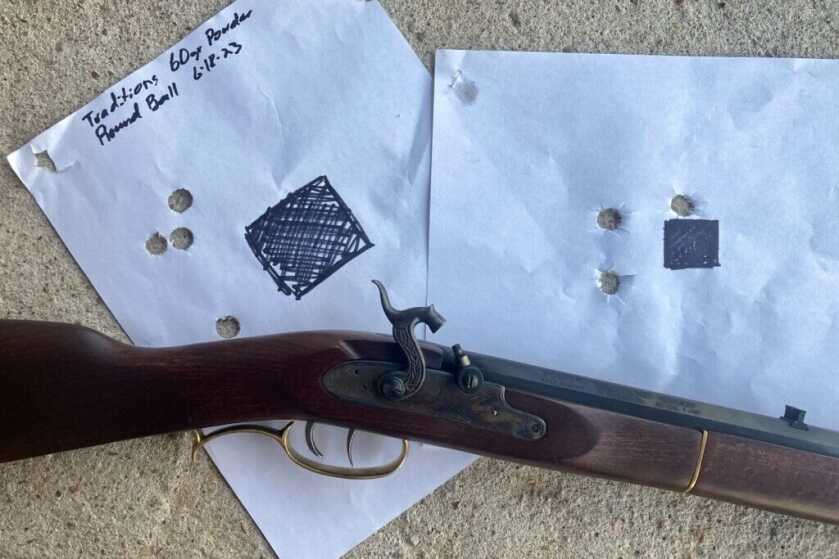
Casting Bullets
Part of the experience when using a rifle like this is making your own ammunition. I use a Lee Ball Mold to cast all my bullets from scrap lead that I salvaged from some old clay sewer pipes.
Casting the bullets is pretty easy. I set my propane torch in a position where I don’t have to hold it. Then, I cut some of the lead into an old steel spoon using a heavy pair of wire cutters. The lead melts after just a minute or so with the torch. I keep it on the heat for a little longer so the impurities have a chance to rise to the surface. When it seems good and melted I pour it into the double ball mold.
The mold solidifies the lead almost immediately. I just tap the mold on its side to cut the sprew and I repeat the process until my ball bag is full. After that, I put some grease on the balls to keep them from oxidizing and to minimize how much lead rubs off on me when I handle them later on.
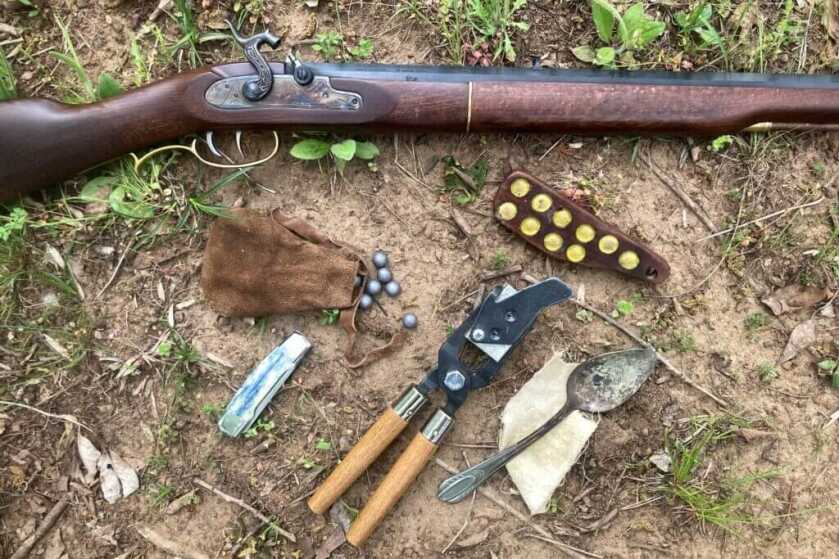
In The Woods With The Traditions Kentucky
I haven’t hunted much with a muzzleloader. My brother and Uncle John used them quite a bit when I was young but I never really got into it. Probably because Oklahoma’s muzzleloader season is only a week long and I already bow hunt during that time so I never felt like I was missing out on much. Well, at least not enough to buy a muzzleloader.
I do most of my deer hunting on my in-law’s farm while we visit for Thanksgiving and Christmas. My wife’s dad and brother are always looking for a big set of antlers and I mainly care about stocking the freezer so I leave the bucks to them.
Shooting doe deer isn’t exciting so I like to mix things up by using a different gun each trip. Last year I used a Ruger American Ranch Rifle in 300BLK for the first one and a Mossberg Maverick loaded with slugs for the second. Building enough skill to hunt with different guns adds a bit of variety and makes each hunt more unique.
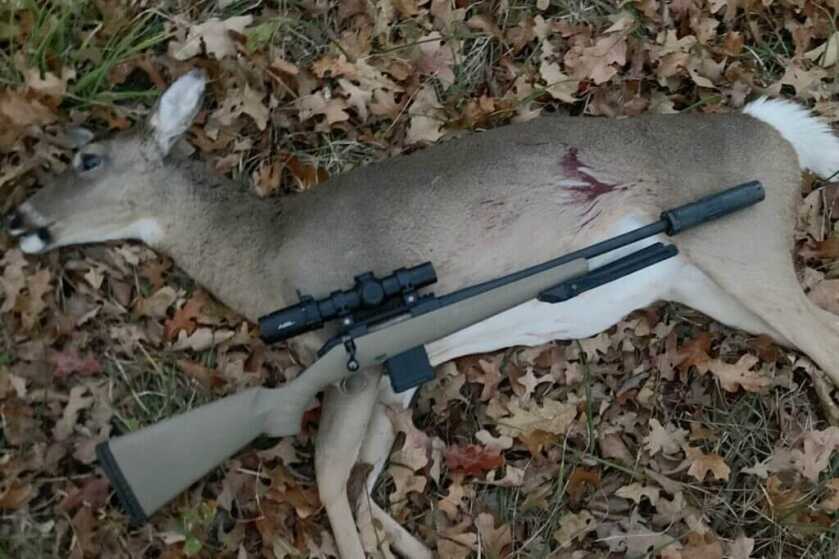
An Itch To Try Something Different
This year I got the itch to use a muzzleloader. More specifically, I wanted to use a traditional-style muzzleloader. Open sights, a long barrel nested in a wood stock, shooting bullets I cast myself. The whole idea was dripping with novelty and I ate it up. I made a leather bag to hold all the components and a bag for the balls. Traditions loaned me the rifle. I even made some of my bullets patriot-style over a campfire (although, I didn’t have any lead figurines to melt).
I hunted for three days before I saw a mature doe. She had walked into the clearing about thirty yards away. I had already fully cocked the hammer. The brass front sight shined in the early morning sun as I placed it right behind her shoulder. I pulled the rear trigger until the mechanism clicked. I could tell the noise had given me away. Her eyes darted to meet mine but it was too late. My finger was already on the set front trigger of the Traditions Kentucky Rifle. The thought alone must have been enough to trip it because in that instant the air was filled with smoke and our mutual gaze was broken.
The smoke lingered among the trees and then, like a cool fog being prodded by the midmorning sun, it slowly vanished. I waited for another doe and a pair of yearlings to leave before beginning my search. It took me a few minutes but I was able to pick up a faint blood trail about twenty yards to the south of where she was standing when I shot. I followed it another fifty yards before I found her. The shot placement was perfect and the round ball had done its job.
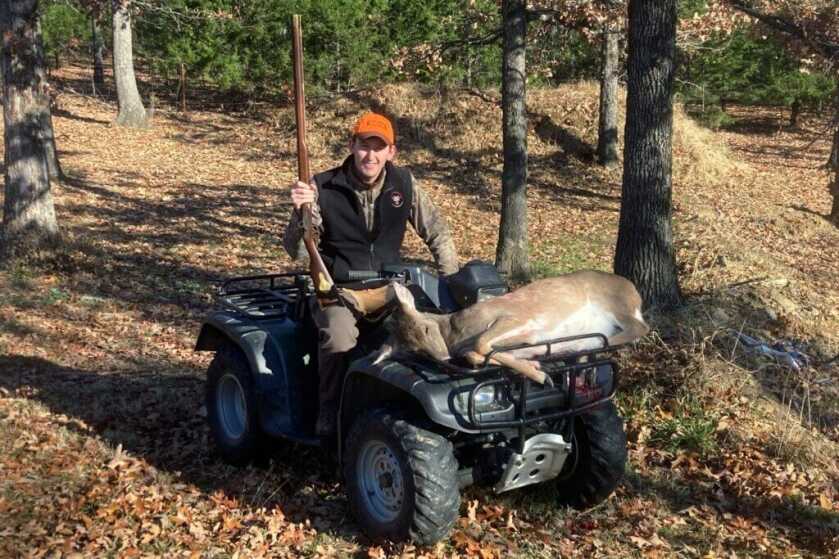
Traditions Kentucky Rifle Conclusion
Novelty is a trait this rifle has plenty of and it should not be overlooked. Becoming proficient with a traditional muzzleloader and using it to stock the freezer has been a very rewarding experience. The extra effort makes each shot more conscious, purposeful, and that much more enjoyable overall.
The finished rifles are available from Traditions’ Website and can ship directly to your door. They cost $550 which I think is fair for the workmanship you receive. If you prefer to build your own, kits are available through various websites for around $400.
*** Buy and Sell on GunsAmerica! ***


